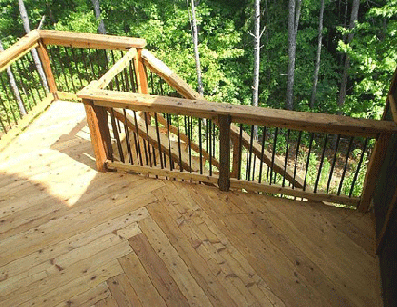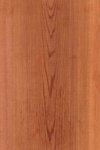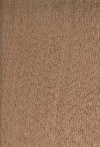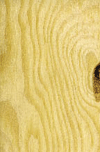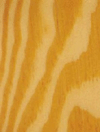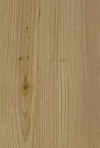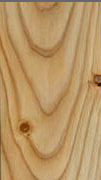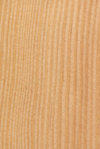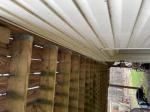Soft Wood Deck Material Comparison
Thought the only wood deck material to choose was cedar or pressure treated lumber?
The most common wood deck material is from the soft woods species. They are easy to work with and less expensive than denser species.
But if you thought cedar, pine or redwood were all you had to choose from, think again.
Why Choose Another Species?
Other types of soft woods can be harder, more resistant to insects, rot and have a different look or grain pattern.
Let's take a look at a comparison of each of the different soft woods you can use for your decking starting from the most common to the lesser known types.
Pressure treated wood has evolved a lot so we wrote a separate page for the that.
WesternCedar |
Natural Color |
Density lbs/ft3 |
Janka Hardness (lbs force) |
Movement |
Maintenance |
|
Red/Brown |
23 |
580 |
Moderate |
Moderate |
Comments:Western cedar is an easy wood to work with for cutting and sanding. It is naturally rot and insect resistant but it does require regular cleaning and maintenance. It stains easily or ages to a nice silver patina. It comes in various grades from knotty to clear. Clear grades are more stable and are more resistant to decay because they have more heartwood. Available almost everywhere but very common on the west coast of the United States and most Canadian provinces. |
|||||
Redwood |
Natural Color |
Density lbs/ft3 |
Janka Hardness (lbs force) |
Movement |
Maintenance |
|
Red/Brown |
28 |
420-480 |
Moderate |
Moderate |
Comments:Redwood is very similar to western red cedar but it has a more profound 'reddy' brown color to it (heartwood). It's an easy wood to work with and cut. It's smooth to the touch and doesn't splinter or crack easily. Heartwood is the best for decay resistance but is harder to find and more expensive. Sapwood does not really compare and will require more maintenance to keep from rotting. Many grades are available at different price ranges. Availability tends to be on the west coast of the USA in specialty lumber yards. It is not commonly found in Canada. |
|||||
Pine, White |
Natural Color |
Density lbs/ft3 |
Janka Hardness (lbs force) |
Movement |
Maintenance |
|
YellowishBrown |
31 |
380-420 |
Moderate |
Frequent |
Comments:White pine is a common wood deck material. Jack pine is also used but it tends to be knottier than white pine as it does not grow as large. Both are used for pressure treated lumber. White pine is mostly sapwood so it is less stable, requires pressure treating, regular maintenance and sometimes sanding. It can warp and crack and split but it is hard to predict given the various size of logs used. It doesn't pull as hard as yellow pine so screws are always best but galvanized spiral nails will work too. It is very affordable and one of the stronger softwoods used in decking and outdoor building. It is most commonly found in Canadian provinces and not usually found in the United States as southern pine tends to dominate that market. |
|||||
Pine, Southern Yellow |
Natural Color |
Density lbs/ft3 |
Janka Hardness (lbs force) |
Movement |
Maintenance |
|
YellowishBrown |
37 |
870 |
High |
Frequent |
Comments:Southern yellow pine is one of hardest, strongest pine species. It grows very fast and has large growth rings therefore, it moves a lot with moisture changes and can be prone to cracking, splintering and warping. Heartwood less so. Because it is so strong it can pull nails easily when it moves. Best to use screws. It is very affordable and performs very well if regularly maintained. Southern yellow pine is probably the most common wood deck material used today. It's available everywhere in the eastern and mid west United States, a little less so in the west coast which tends to stock more local species like hem fir, cedar and redwood. |
|||||
Siberian Larch |
Natural Color |
Density lbs/ft3 |
Janka Hardnes (lbs force) |
Movement |
Maintenance |
|
Pale Yellowy Brown |
42 |
1100-1150 |
Low |
Moderate |
Comments:Siberian larch is a different variety of larch and it is grown in the temperate forests of Russia. The growth rings are smaller, tighter therefore, the density of the wood is higher. It looks kind of like white pine but it is much harder. Russian larch has anywhere from 75%-90% heartwood. That makes it very durable and also very stable. Regular maintenance is required for maximum performance but no where near as crucial as with the pressure treated pines. This is a rare species and it is hard to find. There is one main supplier in North America, Stein Wood Products from Tennessee. |
|||||
Tamarack (Juniper) |
Natural Color |
Density lbs/ft3 |
Janka Hardness (lbs force) |
Movement |
Maintenance |
|
Light Greyish Brown |
37 |
690 |
Low to moderate |
Moderate |
Comments:Juniper, also known as tamarack, grows commonly in eastern Canada and North East United States. It is typically used for fence posts that can last 30-40 years. It is a harder softwood and on par with yellow pine but it grows slower and in a harsher climate so it has tighter growth rings and tends to be more stable in service. It requires moderate maintenance and will turn to a nice grey silver patina as it ages or this can be prevented with stains and UV inhibitors and sealers. It is not commonly available but the one mill known to supply it was operating in New Brunswick, Canada. |
|||||
Hemlock |
Natural Color |
Density lbs/ft3 |
Janka Hardness (lbs force) |
Movement |
Maintenance |
|
Pale Yellowy Brown |
31 |
500 |
Moderate |
Frequent |
Comments:Hemlock is grown on the west coast and is not known as a decay resistant wood unless treated with preservative. It is very dense but in order to absorb the chemicals in the treating process boards are usually incised so the preservatives can soak in deeper to the wood. It is a moderately strong wood and performs well when treated properly but does require regular maintenance and can be rougher on the surface depending on the treating process. It does move during changes in moisture. It is quite commonly available in the west coast states and provinces. But it is also seen with regularity moving eastward across the country. It is very affordable. |
|||||
Douglas Fir |
Natural Color |
Density lbs/ft3 |
Janka Hardness (lbs force) |
Movement |
Maintenance |
|
Light Tan Yellow |
33+ |
660 |
Low |
Moderate |
Comments:Douglas fir is one of the hardest "soft woods" available and it is famous for its golden tan color and very straight grain. It is softer when it is wet or "green" but it is typically sold as kiln dried which can make the wood harder to work with. It is very stable, particularly the vertical or quarter grain stock. But it can be so hard that pre-drilling is required for nailing or screwing to avoid cracking. It's not often used for outdoor decking because it's a bit more difficult to work with and not as decay resistant as its softwood cousins; cedar and redwood. It requires regular maintenance. Not a really popular wood deck material but it is most commonly available along the west coast and in specialty lumberyards across the country. |
|||||
So there you go, a fairly detailed summary of the most common soft wood deck material there is on the market today.
Some Other Great Reading:
Home > Deck Materials > Wood Deck Material





















